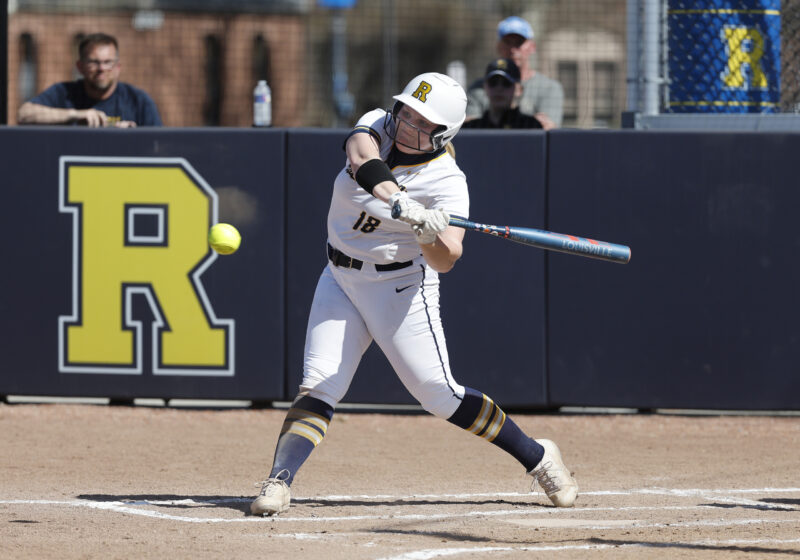Since the 1920s, the University has expanded at a rate of about a million square feet per decade.
By a combination of good luck and mere historical coincidence, the University has found itself in possession of vast tracts of prime real estate of an area known as UR woodlands.
These woodlands exist south of the River Campus in the town of Brighton. The question, now, is what to do with the land.
UR’s administration has proposed building on the Woodlands, according to the University’s master plan. As with any development, the natural order is disrupted woodlands and wetlands are either preserved, or destroyed. How, then, can the University preserve as well as expand?
In June, members of the biology department met with administration officials to discuss just that: the University’s expansion. Professor of Biology Justin Ramsey and biology department chair Tom Eickbush met with UR’s Chief Financial Officer Ronald Paprocki and Director of Facilities and Services Richard Pifer to propose conservation, education and community outreach activities in the woodlands.
The plan and the land
Critically important to understanding the master plan is geography. The Woodlands are in fact two separate tracts. The northern of two, known colloquially as the Whipple Park Woodlands which is closer to campus is to be developed. A 44-acre parcel south of Crittenden Road, known as the Lynchwoods, will be donated to the town of Brighton, where the land will most likely be preserved.
The University’s plan is to construct office and research buildings on the northern part of the Whipple Park Woodlands. Of note, the Laboratory for Laser Energetics will be expanded upon and a new Rochester General Electric Substation will be built to provide electricity for the University.
‘The only significant industrial thing to be created will be a new electrical substation to provide power for the University,” Pifer said. ‘The current plant is at capacity and there is not enough room to replace at its current location.”
In the southern park
Woodlands, near Whipple Park graduate student housing, the University plans to build graduate and possibly retiree and alumni living centers.
‘This is probably the least ecologically valuable spot,” Ramsey said. ‘It’s been cut down multiple times and the trees are fairly small and shrubby.”
While the majority of the woodlands would be left intact, what would be most damaged is the mature woodland at the north end. Forest west of Whipple Park and north of the marsh will be preserved.
‘This plan is probably better and more generous to the woodlands than was originally proposed [in 2006] which was they wanted to have free reign to do a lot of development and Brighton said no,” Ramsey said. ‘The land is quite valuable. There’s a tradeoff. You can’t save everything.”
The administration believes that its plan makes sense for the city of Rochester and inside Brighton, according to Pifer.
‘Now it’s completing the administrative process to get final approval for both of the rezoning efforts,” he said.
The process might be completed sometime next spring or next fall. There is no rush to be approved due to long term nature of the plans, which are on the order of 10 to 20 years away.
Acquiring land
West Brighton , where the Woodlands reside, is far less developed than its cousin, East Brighton. Despite its proximity to the city center, avenues of transportation were largely built connecting East Brighton to Rochester and elsewhere. The area of West Brighton was the Genesees floodplain. Such floods discouraged urban development. Also, the city of Rochester, Brighton and Monroe County, in conjunction with private institutions like the Catholic Church, acquired a large percent of land in the area, leaving little for development.
‘It’s sort of amazing how much got left here; it reflects the fact that this area was a floodplain for the Genesee River,” Ramsey said.
According to the Ramsey Lab Web site, the University made its first land purchase around South Campus in 1948 from Cora Warrant. UR later made subsequent purchases of smaller farms in the region.
In 1982, UR obtained St. Agnes’s School now the Alumni and Advancement Center and associated woodlands from the Sisters of St. Joseph. A later land donation extended UR property south of Crittenden Road an area now including wetlands and second growth (new) forest.
‘The University was really lucky,” Ramsey said. ‘They never went looking for this land, they never bought it because it was valuable. A lot of universities… will buy land or actively pursue donations of land.”
For a long time, the land went untouched and unnoticed. Prior to the University’s acquisition, the majority of the plot was agriculture. These areas have now reverted to nature swamps and second growth forest. About 15 acres, however, always remained woodlands, subject only to small-scale timber harvest. It is these acres that are most environmentally valuable and of most interest to preserve.
Expanding southward has brought up ambivalent responses from the student body.
‘I don’t have a strong opinion since it’s so far into the future, but given the University’s expansion, it makes more sense to have them expand into the city than the woodlands,” junior Jordan Witte said.
In the end, the University will grow, as it always has.
Otis is a member of
the class of 2011.
This article is the first in
a two-part series.
Next week: What expansion means for the Woodlands’ ecology.





